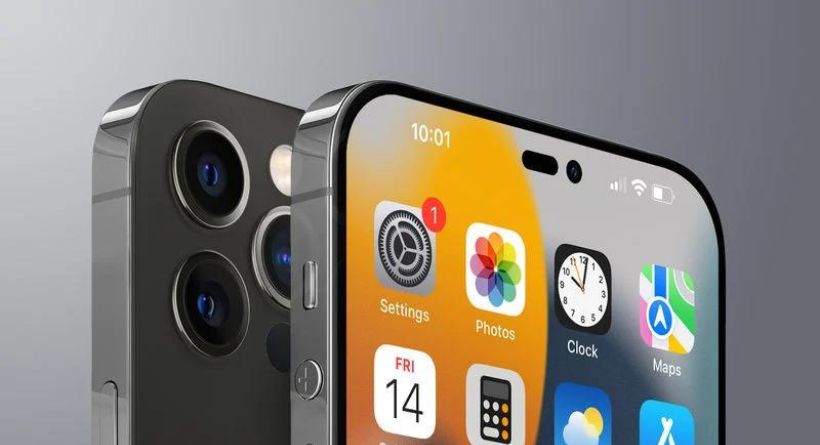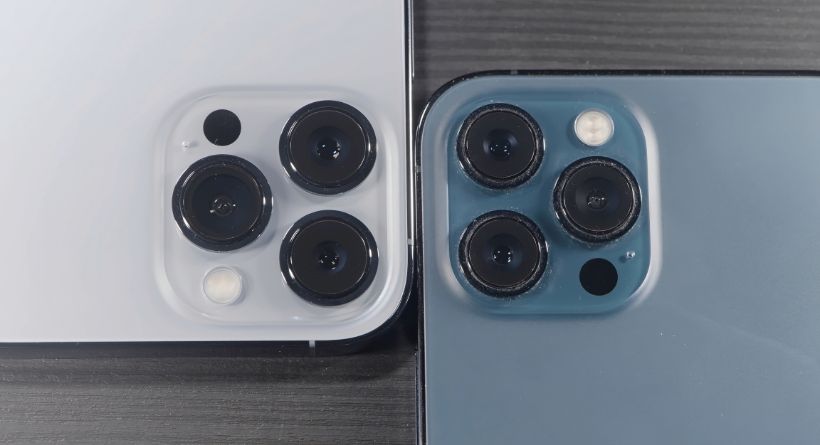Rumored 2022 iPhone Lineup
The 2022 iPhone 14 models won’t be available for purchase for a few more months, but since there are some significant changes planned for Apple’s newest handsets, there have been speculations about them since long before the iPhone 13 models were released last year.
The 5.4-inch iPhone mini will no longer be offered by Apple starting in 2022 due to the fact that it was not well received by buyers. We anticipate seeing a 6.1-inch iPhone 14, a 6.1-inch iPhone 14 Pro, a 6.7-inch iPhone 14 Max, and a 6.7-inch iPhone 14 Pro Max. Apple is expected to concentrate on bigger iPhone sizes for its flagship products moving ahead after experiencing weak iPhone mini sales. There won’t be a 5.4-inch iPhone 14 small this year, it should be noted.
With the announcement of the iPhone 14, this will change. Since 2017, iPhones with Face ID have featured a notch at the front to contain all the essential hardware for facial recognition. The notch is anticipated to be replaced by a new design in the 2022 iPhone 14 Pro models. For a while, there were conflicting rumours, but it seems like Apple will utilise a mix of a pill-shaped cutout to house the essential Face ID components and a circular hole-punch cutout for the camera. Unfortunately, this feature will only be available on the Pro versions; the less expensive iPhone 14 models will still have a conventional notch.
The camera bumps on the iPhone 14 and iPhone 14 Pro may thicken, with the Pro’s hump perhaps rising in size more noticeably. This year, we are not anticipating any big design changes. Apple is anticipated to provide additional colour choices, maybe including a purple hue.
Instead of a stainless steel frame, the iPhone 14 Pro variants could have a titanium frame. Speaker and microphone grille redesigns are also a possibility. To lessen the effects of speedier CPUs and 5G connection, Apple may potentially deploy a new vapour chamber thermal technology that keeps the iPhone cooler.
The iPhone 14 is no exception to the rule that new iPhones typically come with better cameras. The Ultra Wide camera will be improved, and it’s possible that Apple will release a “periscope” zoom lens that offers far larger optical magnification, although it’s still unclear whether this will happen in 2022 or 2023. 48-megapixel cameras and 8K video recording capabilities are anticipated for the Pro iPhone models, but not for the regular iPhone 14 models.
According to rumours, the iPhone 14 models would most likely keep using the A15 processor that was first launched in the iPhone 13 series, while the iPhone 14 Pro models will have an improved A16 processor. It would be the first time that the Pro iPhone models received a speedier processor; Apple may have chosen this course of action to save costs and/or address current supply concerns.
The Snapdragon X65 processor from Qualcomm, the first 10-gigabit 5G modem with improved connection, is anticipated to be used by Apple. Apple is anticipated to unveil new satellite-based emergency capabilities with the X65 that will enable customers to communicate in an emergency and report accidents without cellular service.
New Face ID hardware design with No Notch (Pro Only)
Apple is trying to do rid of the notch that houses the Face ID technology on at least some of the iPhone 14 models, notably the Pro ones. With the exception of a size adjustment for the iPhone 13, the notch hasn’t altered much since it was first introduced as a design feature in 2017.
The 2022 iPhone models, according to Apple analyst Ming-Chi Kuo, won’t have a notch; instead, they’ll have a hole-punch design that’s been common on many Android phones. Since then, rumours have changed, and we now know more precisely what to anticipate.

Apple is developing a design that will have both a pill-shaped cutout and a circular cutout rather than simply a single hole-punch cutout. The Face ID dot projector will probably be housed in the circular cutout, while the front camera, Face ID infrared camera, and potentially other parts will be located in the pill-shaped cutout.
The Face ID technology may possibly be integrated into the iPhone’s display, which would reduce the size of the necessary cuts and increase the amount of front-facing screen real estate. Nevertheless, the combined size of the two cuts is not much larger than the conventional notch, so don’t anticipate much additional usable display space.
In the latter part of August, real-world photos said to show the pill and hole-punch cutout design on the iPhone 14 Pro models surfaced online, giving us a glimpse of what the new iPhone 14 Pro configuration would seem if they are an authentic representation of the design.
Unfortunately, the regular iPhone 14 devices will not sport this new design and will continue to have a notch like the iPhone 13 models.
Animated Display
Early iPhone 14 speculations said that all four of the models, which would be released in 2022, will have ProMotion screens with refresh rates as high as 120Hz, but it seems that won’t be the case.
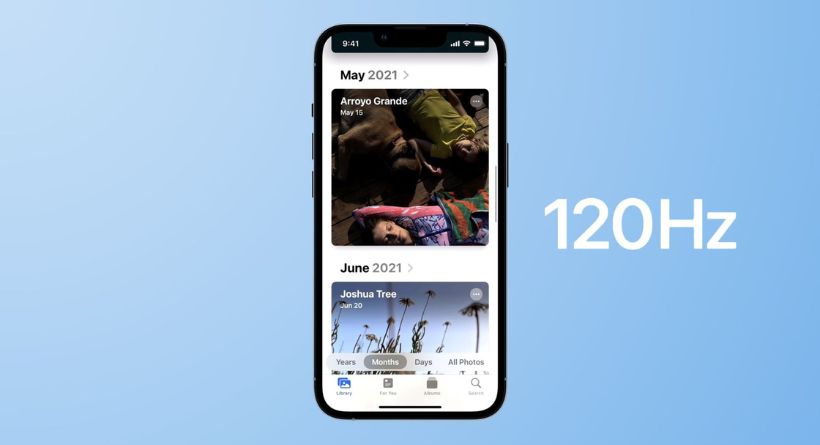
Display researcher Ross Young believes Apple would likely limit ProMotion technology to the iPhone 14 Pro versions due to a shortage of the required panels. Young has made it plain that he thinks the iPhone 14 Pro will continue to provide 120Hz refresh rates. The iPhone 14 Pro and Pro Max are believed to be the first devices to have always-on display technology.
webpage in Korea Young’s claims are supported by The Elec’s claim that at least one of the iPhone models due out in 2019 will have a regular LTPS OLED panel sans 120Hz ProMotion technology. Although analyst Jeff Pu, who is not well-known for his dependability, has said that the functionality would be available on all iPhone 14 versions.
Body Plan
The iPhone 14 devices are anticipated to have the same flat-edged appearance as the iPhone 13 variants. According to subsequent reports and part leaks, Jon Prosser, a leaker, was mistaken when he said Apple will offer a thicker chassis without a back camera bump and round volume controls.
In March, it was reported that images of the iPhone 14 models had appeared online. According to the renders, the regular iPhone 14 models would look just like the iPhone 13 models. The diagonal camera configuration will be accompanied by a conventional notch and the same camera hump at the rear.

We now have a better idea of the proportions of the next smartphones according to a picture that purportedly shows moulds for Apple’s future iPhone 14 variants. Although the moulds are probably intended for use in case manufacture, they do seem to be consistent with the iPhone 14 rumours that we have heard so far.
Apple offers two 6.1-inch iPhones and two 6.7-inch iPhones, but there is no iPhone 14 small. Since of the size increase, covers made for the iPhone 13 models are unlikely to suit the iPhone 14 models because the camera bumps are around 5% bigger.
A selection of covers for the iPhone 14 variants provide a deeper examination of the variations in size and anticipated camera cutouts between the devices. The cases, which show 6.1 and 6.7-inch sizes and bigger camera cutouts for the Pro versions with triple-lens camera configurations, are consistent with all of the reports that we have heard.
Options for Size
In 2022, there won’t be a 5.4-inch iPhone since Apple is discontinuing the “small” series due to weak sales. The iPhone 13 mini will be the last of the smaller smartphones, and Apple is anticipated to concentrate on making bigger iPhones moving ahead.
We anticipate the release of four new iPhone models: the 6.1-inch iPhone 14, 6.1-inch iPhone 14 Pro, 6.7-inch iPhone 14 Max, and 6.7-inch iPhone 14 Pro Max, with the 6.7-inch iPhone 14 Max replacing the small model.
Colors
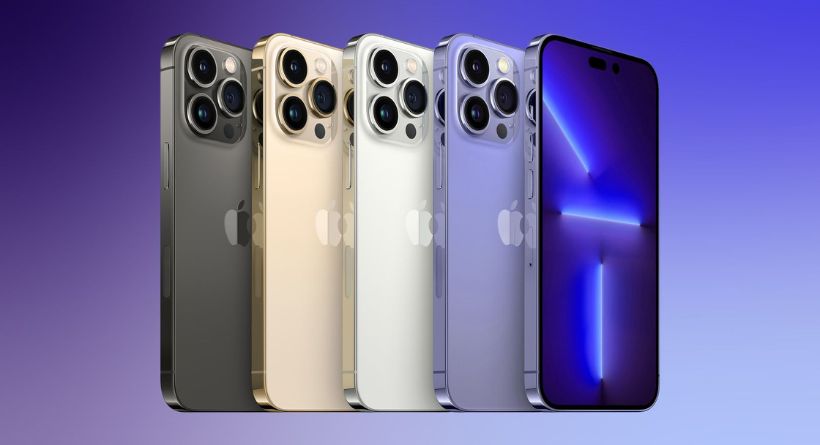
Unconfirmed rumours suggest that the iPhone 14 and iPhone 14 Pro may be available in purple. Although it hasn’t been verified, the rumour indicates that the iPhone 14 and iPhone 14 Pro models would come in a purple colour with a special finish that changes tone depending on the lighting.
If the purple rumour is true, Apple may introduce the same hue for the basic iPhone and Pro models in 2022, but in slightly different tones. While the iPhone 14 Pro and Pro Max are expected to be offered in graphite (maybe midnight), gold (perhaps starlight), silver, and purple, the iPhone 14 and 14 Max are said to be available in black, white, blue, red, and purple.
Titanium
According to a JP Morgan Chase study for investors, the high-end titanium alloy chassis design is also anticipated for Apple’s next iPhone 14 versions. This would be the first iPhone to employ titanium, which Apple has hitherto only used for the Apple Watch.
In comparison to steel and aluminium, titanium is stronger, more corrosion resistant, and more scratch resistant.
Cooling
High-end iPhone models starting in 2022 are probably going to use a vapour chamber thermal technology, which Apple is allegedly “aggressively testing.” Due to their more powerful computers and quicker 5G connection rates, high-end iPhones will need the VC thermal system. Vapor chamber cooling technology, which keeps a device cooler while it is under a lot of stress, is already employed in smartphones from brands like Samsung, Razer, and LG.
Although it is unknown if the vapour chamber thermal system will satisfy Apple’s exacting standards, the company is attempting to improve it, and high-end models may soon use it.
Thunderbolt Port
It’s been said that Apple wants to replace the iPhone’s Lightning connector with a portless design that uses MagSafe for charging, but it’s unclear whether such technology will be available starting with the 2022 iPhone models.
A Lightning connector will still be there on at least some of the next iPhone models.
Leaks of parts and dummy models
The iPhone 14 dummy models MacRumors obtained were made for case manufacturers and provide us a preview of what the iPhone 14 and 14 Pro versions would look like.
Dummy models are often pretty realistic, thus these fake iPhone 14 gadgets offer us a good idea of what we may expect to see. Dummy models are typically fairly precise since there is a lot of money in having a cover ready for a new iPhone before launch.
The iPhone 14 Pro Max, however, will be around the same size as the iPhone 13 Pro Max, but an iPhone 13 Pro Max cover won’t fit an iPhone 14 Pro Max due to the larger camera hump.
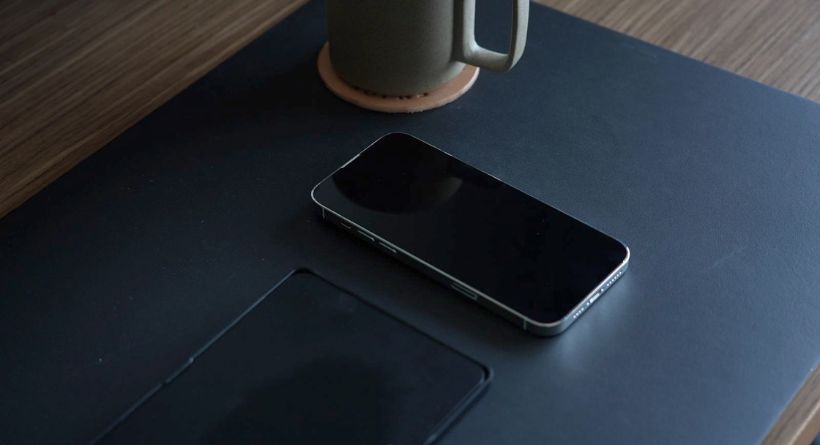
The iPhone 14 models will resemble the iPhone 13 variants in terms of design, with one noteworthy exception: there won’t be an iPhone 14 tiny. Apple is instead producing two 6.1-inch iPhones (the iPhone 14 and iPhone 14 Pro) and two 6.7-inch iPhones (iPhone 14 Max and iPhone 14 Pro Max).

The notch on the Pro versions will be swapped out for a hole and pill-shaped cuts for the camera and Face ID hardware. Although the hole and pill design isn’t all that different from a notch, it will free up some room and lessen the obtrusiveness of the front cameras. The notch will still be present on the standard iPhone 14 models.
We are aware that the sizes of the smartphones have changed somewhat, but comparing a mockup to the iPhone 13 series in reality makes it hard to discern. The screen sizes of the iPhone 14 Pro variants have a few minor differences, but you won’t notice them in normal usage.
On the Pro versions, the camera bumps will be a little broader and wider to accommodate the 48-megapixel camera that Apple is including. Not many design modifications will be made to the standard iPhone 14 models.
In April, front glass panels for the rumoured iPhone 14 models appeared online; these panels showed the iPhone 14 Pro and Pro Max variants’ pill-shaped and hole cuts, which will replace the notch on those devices. Notches are still present on the screens of the basic iPhone 14 and 14 Max.
All of the display panels for the iPhone 14 Pro and Pro Max are consistent with the reports that we have heard so far, and they also have somewhat smaller bezels and a higher aspect ratio.
Technology for cameras
Although the basic iPhone 14 models will also gain a few new capabilities, the iPhone 14 Pro and Pro Max versions will see considerable camera enhancements.
Wide Angle
Apple is likely to replace the 12-megapixel Wide camera found in the iPhone 13 Pro and Pro Max with a 48-megapixel Wide camera with Focus pixels and pixel binning, which will be included in the iPhone 14 Pro and Pro Max.
Sadly, only the iPhone 14 Pro models will be able to utilise the 48-megapixel lens; all other iPhone 14 models are likely to have a conventional 12-megapixel camera lens, which will perform similarly to the 12-megapixel lens used in the iPhone 13 models.
Face Camera
It is anticipated that the enhanced front cameras on all iPhone 14 models this year will have a larger f/1.9 aperture and focusing features. In order to take clearer, more detailed pictures with better depth of focus, a wider aperture would allow more light to travel past the lens and onto the sensor. The advancements in autofocus would provide focus changes during video chats.
Wide-Angle Lens
Apple debuted an enhanced six-element Ultra Wide lens with an increased f/1.8 aperture with the iPhone 13 Pro models, and it is anticipated that same enhancements would be made to the normal iPhone 14 models as well.
A16 Chip
Normally, newer A-series chips are included in new versions of the iPhone, but Apple may break tradition this year. Only the iPhone 14 Pro versions will have the new and speedier A16 processor, claims Apple expert Ming-Chi Kuo.
A substantial distinction between the Pro and non-Pro iPhones will be made in 2022, according to Kuo, who claims that the normal iPhone 14 models will continue to employ the same A15 Bionic that is in the iPhone 13 models. This report has also been confirmed by other sources.
Kuo claims that the A16 processor may only be a marginal improvement over the A15 chip. Improvements are limited since the chip is anticipated to be produced using the same N5P technology as the A15 chip.
Mass manufacturing of next-generation N3 and N4P fabrication methods won’t start until 2023. The N4 process was created by TSMC, an Apple chip supplier, but according to Kuo, it offers no appreciable benefits above N5P, hence Apple will continue to use N5P for the A16. According to Kuo, the A16 update is more of a marketing ploy than a substantive advancement.
Although the iPhone 14 is anticipated to use the same A15 Bionic chip as the iPhone 13 models, leaker ShrimpApplePro claims that the new devices will experience a “overall performance boost” as a result of a new internal design, an updated cellular modem, and other updates, which may result in faster performance.
RAM
Both the iPhone 14 and iPhone 14 Pro models will include 6GB RAM, the same amount of RAM seen in the iPhone 13 Pro models, according to Ming-Chi Kuo and other sources. Taiwanese research company TrendForce has also supported this.
Detection of Auto Crashes
For the iPhone and Apple Watch, Apple is developing an auto collision detection technology that may debut in 2022. When a vehicle collision occurs, it will employ sensors like the accelerometer to measure a surge in gravitational force and alert the user.
The iPhone or Apple Watch would immediately contact emergency services to request assistance when a vehicle collision is detected. This feature may have been created for the iPhone 14 models and the Apple Watch Series 8 since it is scheduled for release in 2022, although it is unlikely to be restricted to those models alone. The Fall Detection function seen in current Apple Watch and iPhone devices will be expanded upon.
Modem Snapdragon X65
The Qualcomm Snapdragon X65 modem, the first 10 Gigabit 5G modem and antenna system for smartphones in the world, will be used in the iPhone 14 models.
Chip, RF
According to Taiwan’s Economic Daily News, Apple has reportedly bought 5G radio frequency (RF) chips from TSMC, utilising its own technology in place of Samsung’s.
According to reports, the chips are made using TSMC’s 6-nanometer technology, which results in a smaller box and less power use. This could result in WiFi 6E functionality and longer battery life while utilising 5G technology.
Connectivity through satellite
Along with the modem, Apple wants to integrate satellite-based emergency capabilities that will let users to send messages in emergency circumstances and report severe incidents in locations without cellular service. The Qualcomm Snapdragon X65 provides certain satellite connection functions.
When there is no cellular or WiFi connection, emergency services and contacts may be texted using the emergency message through satellite service. Along with SMS and iMessage, there will be a new messaging system with grey message bubbles. The size of messages will be limited. Users will also be able to utilise satellite networks to notify big situations like fires and airline disasters. These features will debut at the earliest in 2022 while they are still under development.
Tim Ferrar, a specialist in satellite communications, thinks Apple and Globalstar may unveil satellite connection for the iPhone 14 models. Globalstar announced the purchase of 17 additional satellites in February in order to provide “continuous satellite services” to a possible client, who may be Apple. Ferrar asserts that Apple’s satellite service will use the current satellite spectrum and be made available for free for two-way texting.
Before beginning mass production on the iPhone 14, Apple completed hardware testing for satellite connectivity, according to Apple analyst Ming-Chi Kuo. However, whether such a feature is made available will depend on Apple’s ability to establish a business model and partnership with operators like Globalstar.
WiFi 6E
Ming-Chi Kuo, an Apple analyst, predicts that WiFi 6E connectivity will be included on the iPhone 14. The high-speed wireless transmissions required for AR and VR experiences, according to Kuo, will be provided by WiFi 6E. This technology is also anticipated to be employed in the mixed reality headgear, which might be released in 2022.
WiFi 6E offers the speed improvement and low latency offered by WiFi 6 while using the 6GHz frequency in addition to the 2.4GHz and 5GHz channels to enhance bandwidth and reduce interference.
2TB of space?
Apple introduced a new 1TB storage tier with the iPhone 13 Pro models, and reports say that with the iPhone 14 update, Apple may expand it even higher to 2TB. However, this rumour comes from a source that isn’t usually credible, therefore it should be treated with caution until it is confirmed by a more trustworthy source.
No actual SIM slot
Apple may go to an eSIM-only design with the iPhone 14 models, which might eliminate the need for a physical SIM slot. According to reports, Apple has advised major U.S. carriers to be ready for the 2022 release of eSIM-only handsets. This raises the possibility that certain iPhone 14 models would be the first to lack a SIM card slot.
Apple offered certain iPhone 13 units without a nano-SIM in the package; cellular plans might be activated using an eSIM instead. Cellular plans may be applied to a smartphone utilising an eSIM rather than a nano-SIM.
Since eSIM technology isn’t accessible everywhere, certain regions’ iPhones will still require to have a nano-SIM slot. It may be optional in nations where a SIM-free iPhone is offered, allowing customers to still choose a model that includes a SIM. A list of the more than 60 nations that support eSIM may be seen on Apple’s website.
Apple iPhone 14 Price
The initial pricing for the iPhone 14 is anticipated to be $799, the same as the iPhone 13’s. In an attempt to enhance demand and sales, Apple does not intend to raise the price of the entry-level smartphone.
Launch of the iPhone 14
On September 7, Apple will have a “Far Out” event where the new iPhone 14 variants are anticipated to be unveiled. Apple may start taking preorders on September 9 after the September 7 reveal, with a launch on September 16 after that.
Future iPhone Speculation
The release of the iPhone 16 Pro in 2024 may herald the arrival of Apple’s first all-screen smartphone. According to Apple analyst Ming-Chi Kuo, the phone might be the first to have both an under-screen front camera and Face ID, while according to display expert Ross Young, the iPhone 18 will first introduce under-display Face ID.
According to display researcher Ross Young, 2023 iPhones will likely include a dual-hole cutout like the iPhone 14 Pro versions from this year. The same design with the pill-shaped and circular cutouts will be used by all models starting in 2023; the Pro models won’t be the only ones with this feature. It may be possible to reduce the size of the pill and hole design, but it will be a few years before Apple is ready for complete under-display Face ID.
USB-C

According to Bloomberg and Apple analyst Ming-Chi Kuo, in 2023 Apple will decide against using a Lightning connector for the iPhone in favour of a USB-C port. As a result, all iPhone 15 models will charge via USB-C instead of Lightning by default.
Although it has been reported by several sources that Apple would continue with Lightning, new laws being passed by the European Union would compel Apple to use USB-C on all of its products sold in Europe. If this law is passed, Apple would have to either modify all of its gadgets, which appears more probable, or sell special USB-C versions to Europe.
Within-Chip Modems
Similar to the Apple silicon and A-series processors, Apple is attempting to develop its own in-house built modem chips, which will enable the business to lessen its dependency on modem chip providers. Apple has been developing the modem for a number of years, and after purchasing the bulk of Intel’s smartphone modem division in 2019, development intensified.
Apple might switch to its own 5G modems as early as 2023, according to analyst Ming-Chi Kuo. Apple won’t need Qualcomm once it releases its own modem designs. The “earliest” timeframe is 2023, while other speculations claim that Apple chip supplier TSMC will be prepared to produce Apple’s modem chips as early as 2023.
Zoom Periscope
In the unlikely event that a periscope telephoto lens is not completed in time for the 2022 iPhone models, it may be unveiled in the 2023 iPhone models.
Face ID on the under-display
According to several speculations, Apple is attempting to eliminate the notch by putting the Face ID technology under the display. Initially, it was believed that Apple might use under-display Face ID technology as early as 2022, but display expert Ross Young predicts that it won’t happen until 2023 or 2024.
iPhone that folds
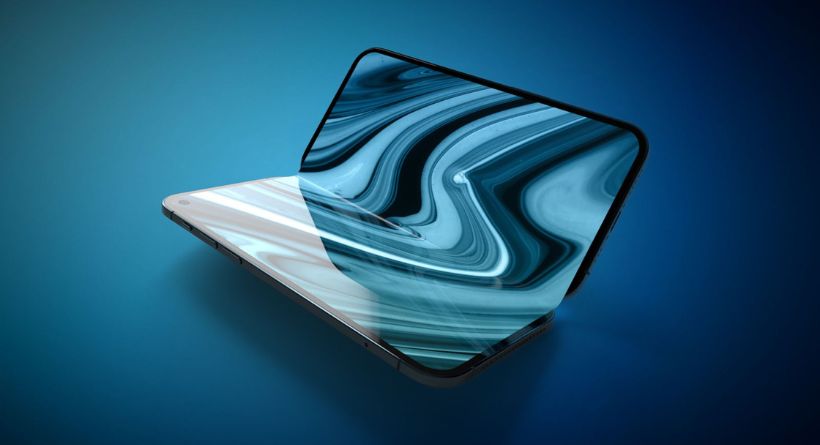
Based on multiple reports and patents the firm has filed, as well as competition from businesses like Microsoft and Samsung, who have created foldable cellphones, Apple may eventually release a foldable iPhone.
Bloomberg claims that Apple has begun “early work” on an iPhone with a foldable display, although the corporation has not yet made a decision about the release of a foldable gadget. According to rumours, a foldable may debut as early as 2024, although 2025 is the most probable release date.

